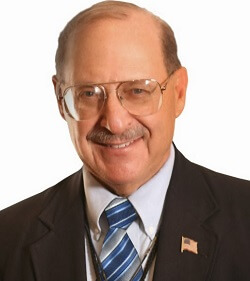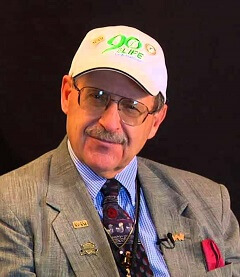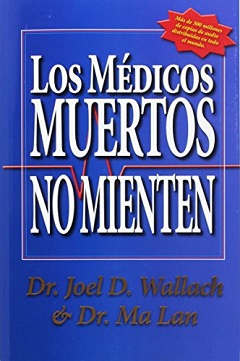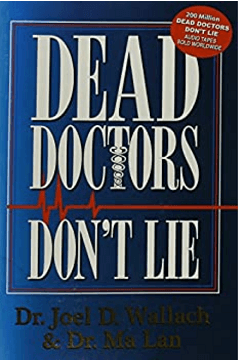Dr. Joel Wallach
Dr. Joel D. Wallach is a veterinarian, naturopath, author, and lecturer who significantly contributed to the growth of the liquid vitamin and mineral supplement sector. Through the widely disseminated audio tape "Dead Doctors Don't Lie," he rose to national prominence. His history and some of his opinions have occasionally come under fire. The current description examines a few criticisms made on pages 74-75 of the Third Edition of the Medical Resource Manual in 1997. On June 4, 1940, Joel D. Wallach was born in West St. Louis. He decided to become a veterinarian and nutritionist early in life due to growing up on a farm. After graduating from high school, Wallach chose to study agriculture with a focus on animal husbandry and a minor in field crops and soils at the University of Missouri in Columbia. The School of Agriculture at the University of Missouri has geology, biochemistry, nutrition, and food science departments, in addition to a well-known "Trace Compounds Research Centre" that looks into trace substances' biological and health implications for environmental health. Wallach thrived in this interdisciplinary academic setting and learned a plethora of knowledge that would eventually be useful in his work as a veterinary pathologist and naturopathic doctor. When Wallach graduated from Missouri with a B.S, he began his studies at the same university in 1962 and finished them there in 1964, receiving a Ph.D. in veterinary medicine. At the Centre for the Biology of Natural Systems at George Washington University in St. Louis, he received a post-doctoral fellowship in comparative medicine from 1966 to 1967. Wallach then worked for two years at the Natal Fish & Game Department in Natal, Republic of South Africa, before returning to the Diagnostic Laboratory at Iowa State University in Ames, Iowa. Background and Professional Experience
It was believed that environmental pollution and other biological variables contributed to the early demise of caged animals and perhaps even people during the early 1960s. The National Institutes of Health generously provided funds to the St. Louis Zoological Gardens to conduct this research. A proficient wildlife veterinarian and pathologist were needed for the project. In the role he was employed, Wallach had the chance to do autopsies on various captive wild creatures that were passing away naturally in zoos in Los Angeles, Jacksonville, Chicago, Memphis, and St. Louis. At the Yerkes Regional Primate Research Centre, Department of Pathology, Atlanta, Georgia, in the future, Wallach conducted comparative autoptic experiments on monkeys and humans. Until 1979, his research was going well until he found pancreatic lesions in the progeny of a family of malnourished rhesus monkeys that were histologically identical to those seen in cystic fibrosis patients (CF). Wallach hypothesized that dietary deficits and imbalances brought CF in humans due to this discovery. His viewpoint at the time sounded so outlandish-CF is thought to be a genetic disorder-that he was fired from his job at the Yerkes Primate Research Centre. His audacious theory would eventually be confirmed by scientific evidence, but in the meanwhile, Wallach opted to change jobs because he had little to no chance of landing a suitable post inside his field. In 1980, Wallach started teaching at the National College of Naturopathic Medicine in Portland, Oregon, and in 1982, he started his N.D. studies there. He also taught nutrition there. In 1982, after receiving his N.D. degree and license, Wallach established a private practice in Cannon Beach, Oregon, where he focused on providing patients with cystic fibrosis with nutritional therapy. He and his newlywed, Dr. Ma Lan, a Chinese doctor, went to China in 1987 to undertake a study at Harbin Medical University as part of his ongoing research on cystic fibrosis. From 1990 to 1993, Wallach practiced naturopathy (legally) for the Hospital Santa Monica in Tijuana, Mexico. Publications and the Number of Autopsies Done by Dr. Joel Wallach
A partial list of the 55 books, reviews, and publications that Dr. Wallach wrote or coauthored between 1965 and 1994 includes 20 papers that were published in the Journal of the American Veterinary Medical Association (JAVMA), 6 reviews that were published in professional books, and the remaining papers that were published in other veterinary journals. In addition, Wallach and W.J. Boever wrote the authoritative book "Diseases of Exotic Animals: Medical and Surgical Management," released by W.B. Saunders Co. in Philadelphia in 1983. Aside from that, he also penned two novels for ordinary readers, "Let's Play Doctor" and "Rare Earth's and Forbidden Cures," all of which were released by the Californian publisher Double Happiness Publishing Co. in Bonita. His papers and reviews are expertly written, well-cited, and frequently replete with illustrations. His first article, published in 1965, discusses goitrogenic hypothyroidism in feeder lambs. Later articles and reviews cover a range of issues, including common ailments and treatments for ruminants, kangaroos, primates, elephants, game birds, exotic birds, reptiles, and fish. His assessment of "Nutritional Diseases of Exotic Animals," which appeared in 1970, serves as a nice illustration and chronicles several diseases caused by inappropriate feeding methods in captive exotic animals. Wallach shows nineteen images of animals or their organs with nutritional problems in this review, all of which are taken from his work files. 
A review on environmental and nutritional illnesses of confined reptiles was published in 1971 JAVMA 159, pp. 18 images of reptiles or their parts, including 17 of his own. 1632-1643. A veterinarian must know everything about managing and caring for goldfish is covered in another review published in the same year (JAVMA 159, pp. 583-595). Breeding and child development, biological information, nutritional and metabolic disorders, infectious diseases, parasites, skin disorders, illnesses of the digestive, neurological, respiratory, and circulatory systems, as well as surgical techniques and anesthesia, are covered. 
Wallach outlines how to take care of an elephant's feet in captivity in a 1977 article published in JAVMA 171, pages 906-907. These few instances should be sufficient to show his breadth of knowledge and skill in the workplace. Wallach had access to a wide variety of big and tiny animals, and he got autopsy samples from zoos all around the nation. That explains the staggering amount of autopsies he claims to have carried out over 12 years?17,500 on 454 animal species and 3,000 on humans. Given that most of the autopsies were on tiny animals and were regular and that there are 250 working days in a year, it only comes to an average of 7 autopsies per day, which is not a lot for a veterinary pathologist who is completely involved.
Next TopicGeorge Washington
|
 For Videos Join Our Youtube Channel: Join Now
For Videos Join Our Youtube Channel: Join Now
Feedback
- Send your Feedback to [email protected]
Help Others, Please Share









